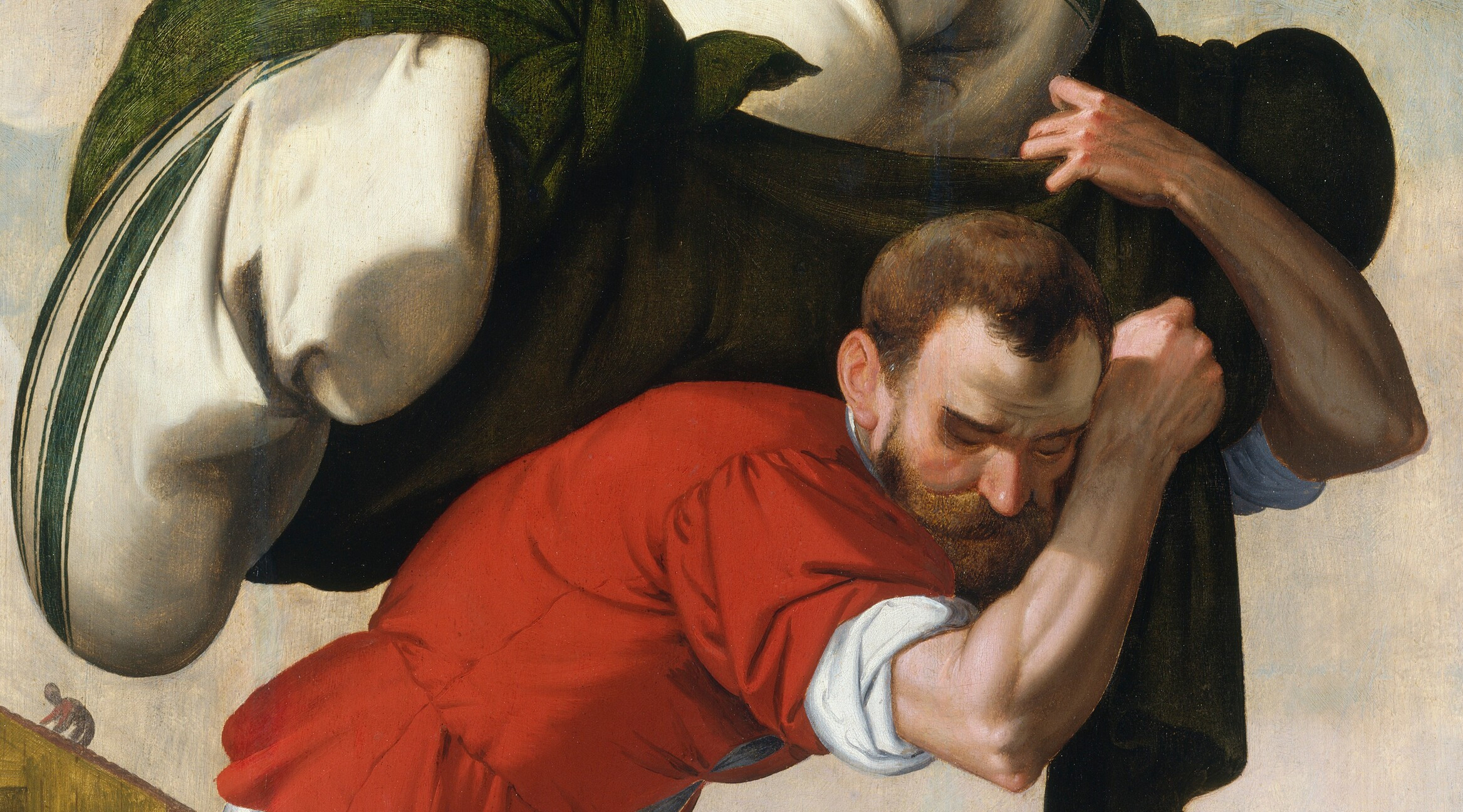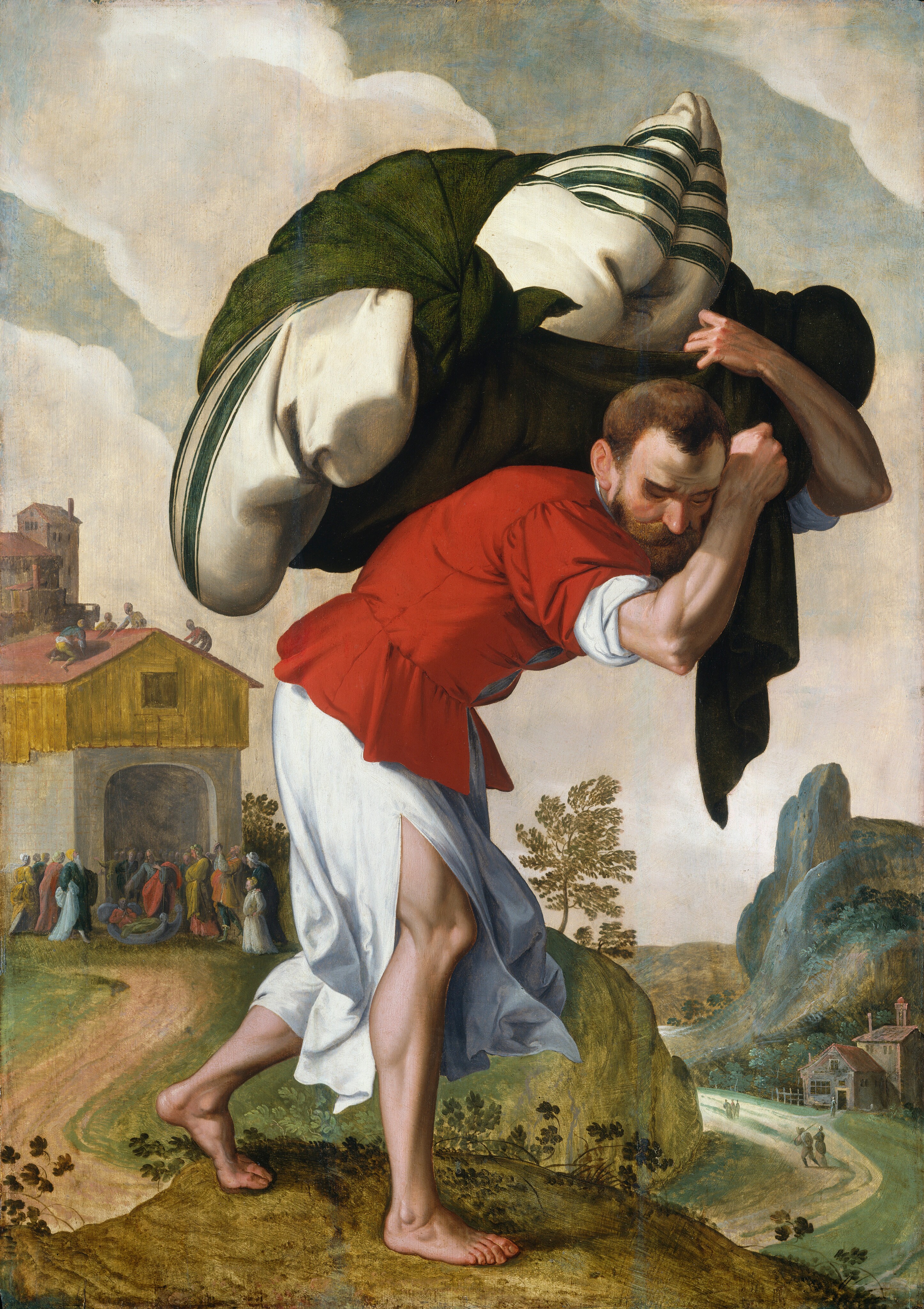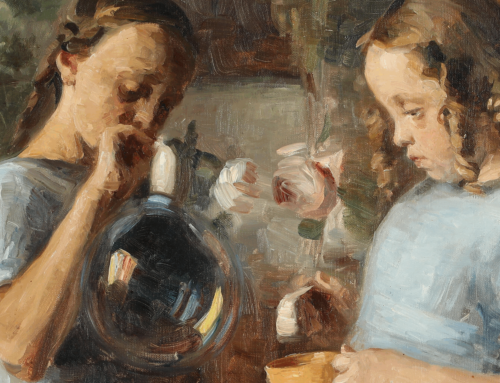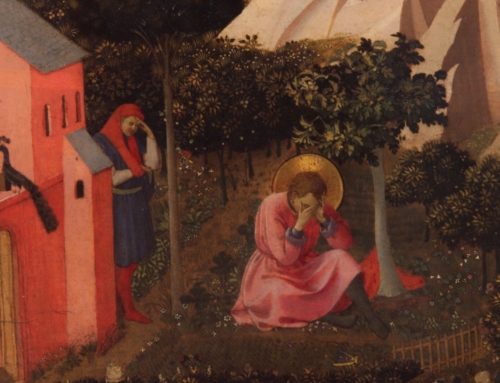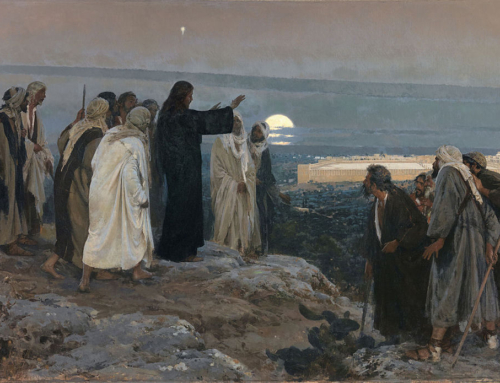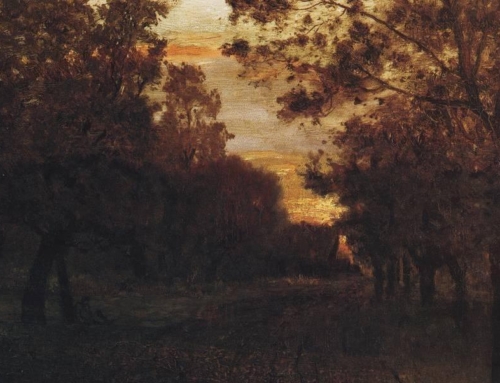Walking down a busy city street, it can be easy to let strangers pass around you without giving them a second thought. Everyone is going about their business, caught up in their daily tasks. But have you ever walked past someone who, for whatever reason, catches your attention? Who are they? Where are they going? What is their story?
In the 16th century painting The Healing of the Paralytic, an anonymous Dutch master places us in this exact situation:
Figure: Anonymous, Netherlandish 16th Century, The Healing of the Paralytic
The artist transports us to first-century Galilee, to the small town of Capernaum. With the artist, we can use our imagination to enter into the scene recounted in Mark 2:1-12. As we leave town, we notice a man—hunched under his bundle, deep in thought. What has he just experienced?
Most of the time, when we pass strangers in the street, we’ll never know where they’ve come from, where they’re going, or how they got there. Centuries after the events in the Gospel, the artist invites us, more or less familiar with the Scriptures, into this stranger’s life. With the Gospel, he is no longer a stranger to us.
Yes, we know this man from Capernaum. We can look to the left and see a crowd filling a house. More curious yet, men have climbed the roof, torn it open, and now peer down below, ropes in hand.
“And many were gathered together, so that there was no more room, not even at the door.” (Mark 2:2).
What was so important inside? Through the crowd, we would have found a man lying on a mat suspended by the ropes coming through the roof. Yes, this was that same man on the road. Yet he has changed. The man lying on the mat was weak, paralyzed.
He was looking up at someone—the one they call Jesus. And he was looking back at the man with tender love in his eyes.
And Jesus said, “Your sins are forgiven.” But who is this man to forgive sins? How does forgiveness help someone trapped in his bed?
“Now some of the scribes were sitting there, questioning in their hearts, ‘Why does this man speak like that? He is blaspheming! Who can forgive sins but God alone?’” (Mark 2:6-7).
Then, Christ commanded the paralytic, “Get up. Take up your mat and go home.” And the man got up!
And here he is, as we see him now—strong and walking.
But, as great as the paralytic’s story is, he should not be our main focus. The one who healed him is.
Jesus is the protagonist. He is the center of our attention. He is the one who heals “that you may know that the Son of Man has authority on earth to forgive sins” (Mark 2:10).
If we wait from our place on the road, we will see Jesus. Soon we will meet him just as we met the paralytic: walking out of a city with a bed on his back. But his bed isn’t made of wool and linen. No, it is the Cross where he will die sleeping the sleep of death.
Like the paralytic, Jesus will be fixed to his bed, but with nails in his hands and his feet. Unlike the man whose friends lowered him to be healed, Christ will be abandoned, mocked, and lifted up on the Cross by those he called his own.
And while the paralytic had no power to raise himself from his bed, Jesus says, “I have power to lay down my life and I have power to take it up again” (John 10:18). Jesus has the power to rise even from the dead.
Now that man walks home, healed and forgiven, not knowing what will come next—the road lies open before him. But Christ knew what would come next.
We can feel like the paralytic trapped on our own mats of weakness, bad habits, and past mistakes. And Jesus sees us in our helplessness and he forgives us. He heals us by the strength of his grace.
And he looks at us and says: Take up your mat. Take up your cross and follow me. Follow me home, to my Father and your Father, to my God and your God (cf. Mark 2:11; Matt 16:24; Mark 8:34; Luke 14:27; John 20:17).
✠
Image: Anonymous, Netherlandish 16th Century, The Healing of the Paralytic

